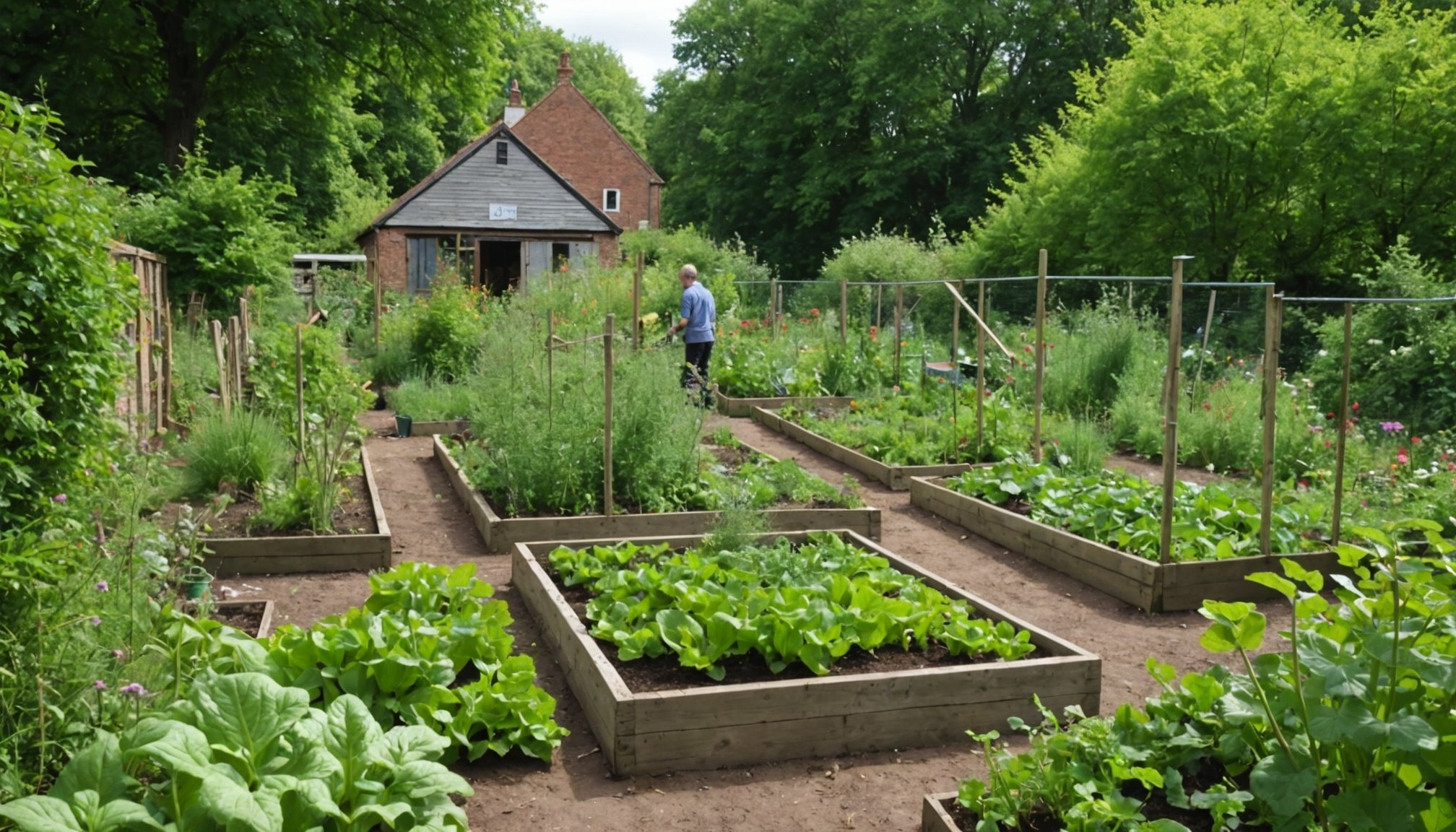The Role of UK Community Gardens in Nature Conservation
UK community gardens have increasingly gained popularity as pivotal hubs for nature conservation within urban environments. These green spaces serve as crucial sanctuaries, offering refuge for various native species and contributing significantly to the enrichment of local urban ecosystems.
Community gardens often assume the role of mini-habitats, fostering biodiversity within cities that are typically dominated by concrete and pollution. By serving as a home for native plants, insects, and small animals, these gardens enhance the ecological fabric of urban landscapes. They support species that might otherwise struggle to survive amidst urban sprawl and help maintain genetic diversity in plant and animal populations.
Also read : Revamping uk pesticide regulations: innovative strategies for protecting pollinators
Urban ecosystems are inevitably impacted by the presence of community gardens. These gardens positively influence local climate and air quality by integrating larger amounts of plant matter into urban areas. Through photosynthesis, plants contribute to oxygen production and carbon sequestration. Additionally, community gardens act as water catchment areas, reducing urban runoff and promoting groundwater replenishment.
The growth of community gardens across the UK is not just a testament to their aesthetic and recreational value, but also highlights their role in our environmental strategies. They combine human activity with ecological enhancement, fostering a harmonious coexistence that is crucial for sustainable urban development.
Additional reading : Creating stag beetle havens: an enthusiast”s handbook for uk gardeners to preserve and support endangered populations
Ecological Benefits of Community Gardens
Community gardens provide vital ecological benefits, enhancing biodiversity in urban settings. By cultivating a range of plant species, these gardens help create habitats that support a variety of life forms. Gardens in densely populated areas serve as green oases, attracting pollinators like bees, butterflies, and birds, which are crucial for pollinating plants both within and beyond garden borders. This presence of diverse plant life in turn supports a wide array of insects and small animals, facilitating the natural balance within urban ecosystems.
Enhancing Biodiversity in Urban Areas
Community gardens play a crucial role in boosting biodiversity through the intentional planting of native and diverse species. Native plants provide a familiar habitat and food source for local wildlife, helping to sustain declining animal populations in urban regions. These gardens act as stepping-stones in green corridors, enabling wildlife movement across fragmented city landscapes.
Supporting Pollinators and Wildlife
Community gardens are key supporters of pollinator populations, which are essential for global food security. By accommodating pollinator-friendly plants and providing nesting materials, these gardens help replenish urban pollinator numbers. Additionally, they create shelter and nourishment opportunities for other wildlife, fostering vibrant urban ecosystems that benefit both humans and nature.
Improving Soil Health and Water Management
The ecological benefits of UK community gardens extend to enhancing soil health and water management. By incorporating a diversity of plant species, these gardens employ agroecological methods that naturally enrich the soil. Diverse plants contribute to a varied root system, which in turn fosters a healthy soil ecosystem. This improved soil structure can enhance water retention and decrease the need for artificial irrigation.
Community gardens are unparalleled in their ability to manage urban runoff. The integration of plants with distinct growth habits improves soil porosity, enabling better water absorption. By acting as natural sponges, gardens reduce surface water runoff, ultimately leading to greater groundwater replenishment. Situated in urban environments, their role in water management becomes crucial, especially in cities facing frequent flooding.
Moreover, community gardens support soil conservation through minimal input of chemical fertilisers and pesticides. The presence of a variety of plant species helps maintain soil fertility, reduces soil erosion, and mitigates the risks associated with pollutants leaching into water tables. The implementation of these environmentally friendly practices contributes to more sustainable urban agriculture, showcasing community gardens as keystone projects addressing critical urban ecological challenges.
Case Studies of Successful Community Gardens
Exploring examples of successful community gardens in the UK offers valuable insights into best practices for fostering biodiversity and engaging the community. Among such examples is the King’s Cross Skip Garden & Kitchen in London. This garden exemplifies how unique design features can support conservation efforts, incorporating recycled materials and movable planters to adapt to urban challenges. By focusing on pollinator-friendly plants and native species, the garden creates a thriving habitat for wildlife within a bustling urban setting.
Another notable model is The Green Backyard in Peterborough, which emphasizes community involvement. This garden cultivates a sense of shared ownership, encouraging locals to participate in gardening and maintenance activities, which has been crucial to its success. Community workshops and events strengthen bonds while promoting urban agriculture awareness.
These successful projects highlight key elements for effective community gardening: integrating native and adaptable plant species, involving the community actively, and designing spaces that cater to both ecological and social needs. Incorporating these aspects can transform community gardens into vibrant ecosystems and dynamic social spaces, contributing significantly to urban nature conservation. The experience and strategies from these gardens offer replicable models for emerging urban gardening initiatives across the UK.
Practical Tips for Community Garden Design and Maintenance
Ensuring the success of community garden design begins with planning for pollinators and native plants. Incorporating plant species that are local to the area not only supports biodiversity but also strengthens the garden’s resilience to local climate conditions. Pollinator-friendly plants, such as lavender and coneflowers, attract bees and butterflies, directly contributing to nature conservation efforts.
Sustainable Practices for Long-term Viability
A focus on sustainable practices ensures the longevity of community gardens. Techniques like crop rotation and composting enrich the soil without the need for chemical supplements, fostering healthy urban ecosystems. By practising water conservation methods, such as installing rain barrels or creating swales for runoff, gardens retain moisture and reduce dependence on external water supplies.
Engaging the Community in Garden Maintenance
Community involvement is essential for maintaining vibrant and functional gardens. Encourage locals to participate through workshops or regular maintenance events, instilling a sense of ownership and pride. This engagement increases the garden’s sustainability and helps spread awareness of ecological and conservation practices throughout the neighbourhood. Building strong community relations enhances collective responsibility, ensuring the garden thrives as a hub of both human and natural activity.










